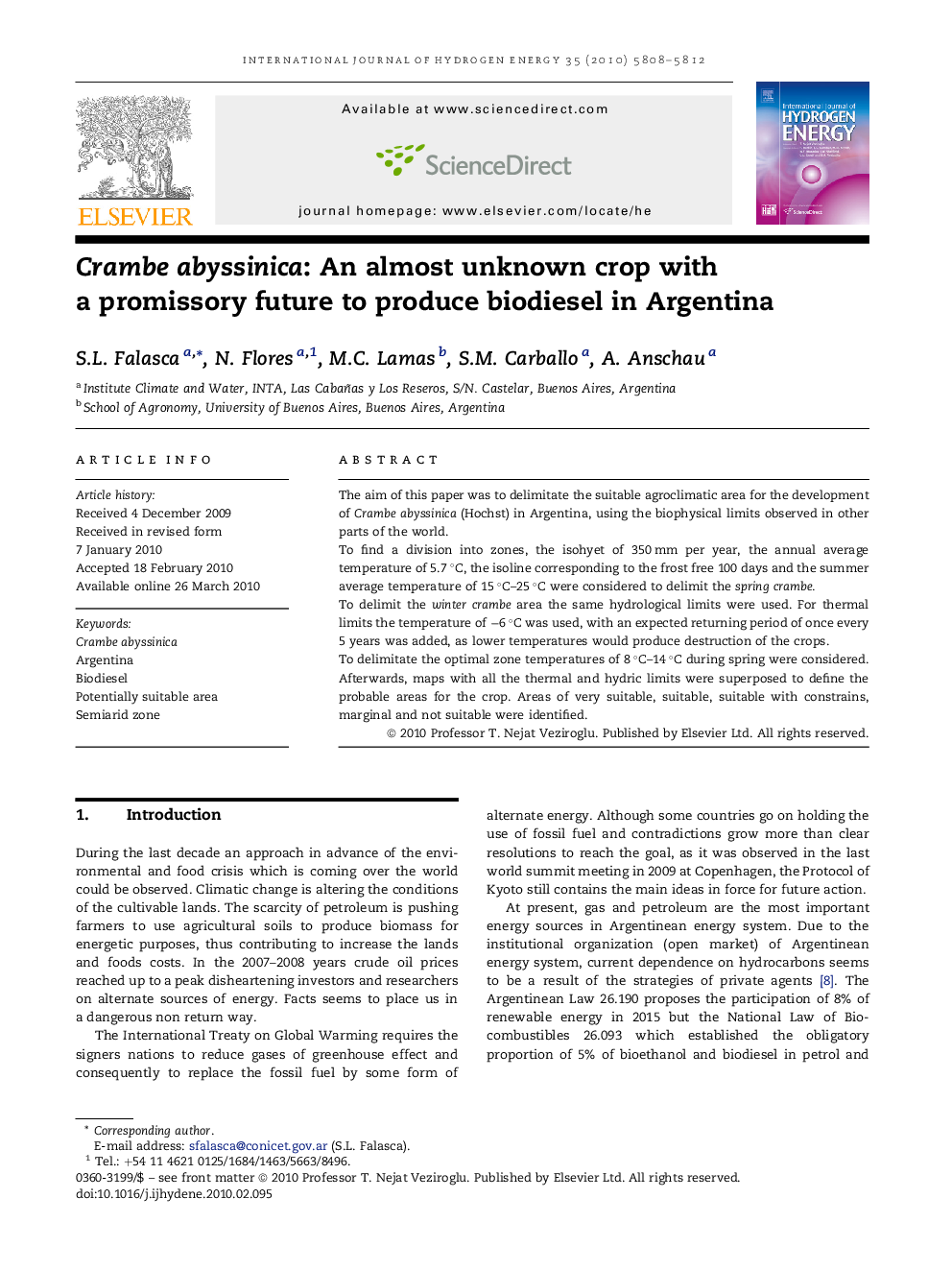| Article ID | Journal | Published Year | Pages | File Type |
|---|---|---|---|---|
| 1280608 | International Journal of Hydrogen Energy | 2010 | 5 Pages |
The aim of this paper was to delimitate the suitable agroclimatic area for the development of Crambe abyssinica (Hochst) in Argentina, using the biophysical limits observed in other parts of the world.To find a division into zones, the isohyet of 350 mm per year, the annual average temperature of 5.7 °C, the isoline corresponding to the frost free 100 days and the summer average temperature of 15 °C–25 °C were considered to delimit the spring crambe.To delimit the winter crambe area the same hydrological limits were used. For thermal limits the temperature of −6 °C was used, with an expected returning period of once every 5 years was added, as lower temperatures would produce destruction of the crops.To delimitate the optimal zone temperatures of 8 °C–14 °C during spring were considered.Afterwards, maps with all the thermal and hydric limits were superposed to define the probable areas for the crop. Areas of very suitable, suitable, suitable with constrains, marginal and not suitable were identified.
